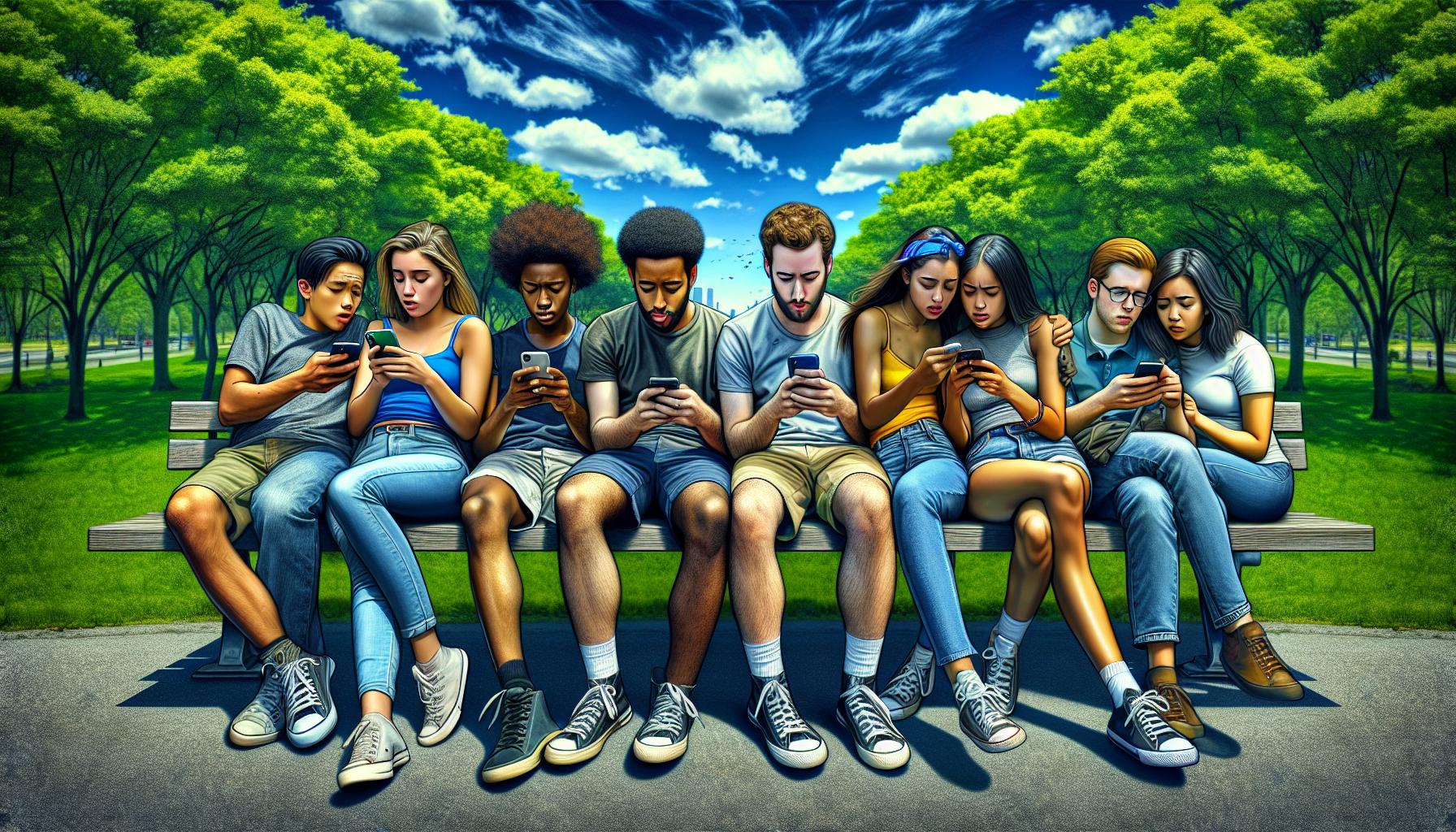Key Takeaways
- Understanding Modern Lifestyles: The concept of “lifestyle” encompasses diverse choices and habits that define contemporary living, including trends like minimalism and wellness culture.
- Urban Dictionary as a Resource: This platform serves as an essential tool for decoding the language of modern lifestyles, offering insights into slang that reflects societal trends and cultural shifts.
- Dynamic and Relevant Language: Definitions on Lifestyle Urban Dictionary are continuously updated to reflect real-world usage and emerging trends, keeping the content engaging and culturally relevant.
- Popular Lifestyle Terms: Key terms like “digital nomad,” “self-care,” and “hustle culture” illustrate the language and attitudes shaping today’s urban living dynamics.
- Cultural Influence of Slang: The dictionary captures and highlights changing societal values, such as body positivity and sustainable living, through the lens of contemporary slang.
- Community Engagement: Utilizing Lifestyle Urban Dictionary effectively involves searching for terms and participating in the community, which enhances comprehension and fosters richer discussions around modern language.
In today’s fast-paced world, the way people live and interact has evolved dramatically. The term “lifestyle” captures this essence, reflecting the choices, habits, and trends that shape modern existence. From minimalism to wellness culture, understanding these concepts can help individuals navigate their daily lives more effectively.
Urban Dictionary has become a go-to resource for decoding the ever-changing language of contemporary lifestyles. It offers insights into slang and phrases that define various cultural movements, making it easier to grasp the nuances of modern living. By exploring the “lifestyle” entries in Urban Dictionary, readers can gain a deeper appreciation for the diverse ways people express themselves and their values in urban settings.
Lifestyle Urban Dictionary
Lifestyle Urban Dictionary serves as an essential tool for decoding contemporary slang and phrases relevant to modern living. This resource captures the evolving language that reflects societal trends and cultural movements, taking into account various lifestyle choices.
Users find definitions that encompass concepts like minimalism, health and wellness, and digital nomadism. Each entry offers insights into how these trends influence the way people express their lifestyles.
The platform’s unique contributions include:
- Dynamic Language: Definitions adapt to current events and shifts in lifestyle trends.
- Cultural Relevance: The dictionary highlights slang that resonates with specific communities, showcasing the diversity of expressions found in urban culture.
- User Participation: Contributions from users keep the content engaging and up-to-date, reflecting real-life usage and context.
Utilizing Lifestyle Urban Dictionary enhances understanding of the words and phrases that shape modern lifestyles, fostering a deeper appreciation of contemporary urban living.
Popular Terms in Lifestyle Urban Dictionary

Lifestyle Urban Dictionary features a range of terms that capture current trends and emerging slang within modern culture. Understanding these terms aids individuals in engaging with contemporary dialogues around lifestyles.
Current Trends
- Minimalism: A lifestyle choice focusing on simplicity and intentional living. It emphasizes decluttering both physical space and mental load.
- Digital Nomad: A person who leverages technology to work remotely while traveling. This lifestyle allows individuals to maintain flexibility in their work environment.
- Wellness Culture: An approach emphasizing holistic health, including physical, mental, and emotional well-being. It promotes routines that enhance quality of life, such as mindfulness practices.
- Sustainable Living: A lifestyle that seeks to minimize environmental impact. It includes practices like zero-waste shopping and eco-friendly product choices.
- FOMO: Fear of missing out, referring to anxiety stemming from the belief that others are having exciting experiences without you. This influences social media engagement.
- Ghosting: The act of abruptly cutting off communication with someone without explanation. Common in dating and social interactions, it reflects modern relationship dynamics.
- Self-Care: Engaging in activities that promote personal well-being and happiness. This term encourages individuals to prioritize their mental and emotional health.
- Hustle Culture: An ethos glorifying relentless work and productivity. It emphasizes ambition and often promotes side gigs or entrepreneurial ventures.
These terms showcase the evolving language that encapsulates the nuances of contemporary lifestyles.
The Impact of Lifestyle Urban Dictionary

The Lifestyle Urban Dictionary significantly influences contemporary culture and language. Its role in shaping modern slang reflects broader societal changes and trends.
Cultural Influence
Cultural influence plays a vital role in shaping the definitions found in the Lifestyle Urban Dictionary. It captures the essence of movements such as minimalism, body positivity, and wellness. Each term reflects shifting values and priorities, highlighting collective experiences. Words like “hygge” and “veganism” evolve as society embraces new lifestyles. This dictionary also serves as a repository of phrases that resonate with various subcultures, offering insights into shared norms, beliefs, and practices.
Social Media Role
Social media catalyzes the popularity and dissemination of terms within the Lifestyle Urban Dictionary. Platforms like Twitter, Instagram, and TikTok foster real-time communication, allowing users to popularize new slang quickly. Trends emerge as influencers adopt and share specific phrases, prompting widespread usage. For instance, “self-care” gained traction through countless posts promoting mental health awareness. Additionally, hashtags facilitate tracking and categorizing lifestyle trends, making the vocabulary readily accessible. Through these channels, the Lifestyle Urban Dictionary adapts and evolves alongside contemporary culture, ensuring relevance and engagement.
How to Use Lifestyle Urban Dictionary Effectively

Using the Lifestyle Urban Dictionary effectively enhances comprehension of modern slang and cultural terms. Readers can navigate definitions and connect with community insights.
Finding Definitions
Finding definitions in the Lifestyle Urban Dictionary requires a straightforward approach. Users can search for specific words or phrases directly in the search bar. They can also browse categories that suit their interests, such as minimalism or wellness culture. Each entry provides not only the meaning but also examples of usage that illustrate context. This helps clarify how contemporary terms fit into daily conversations and current trends.
Engaging with the Community
Engaging with the community fosters a richer understanding of evolving language. Users can contribute by submitting their own definitions or comments, which encourages interaction and discussion. This participatory aspect keeps the content fresh, allowing for diverse perspectives on lifestyle-related terms. Following social media channels and forums linked to the Urban Dictionary also facilitates connection with others interested in slang and cultural movements, thereby enriching the overall experience.
Vital Resource For Anyone Looking to Grasp The Nuances of Contemporary Living
The Lifestyle Urban Dictionary stands as a vital resource for anyone looking to grasp the nuances of contemporary living. It reflects the dynamic nature of language shaped by societal trends and cultural movements. By engaging with this platform, users can stay informed about the latest slang and expressions that define modern lifestyles.
As trends like minimalism and wellness culture continue to evolve, understanding the language surrounding them becomes essential. The Lifestyle Urban Dictionary not only enriches vocabulary but also fosters a sense of community among those navigating the complexities of urban life. Embracing this tool enables individuals to connect more deeply with the cultural shifts that influence their everyday experiences.



